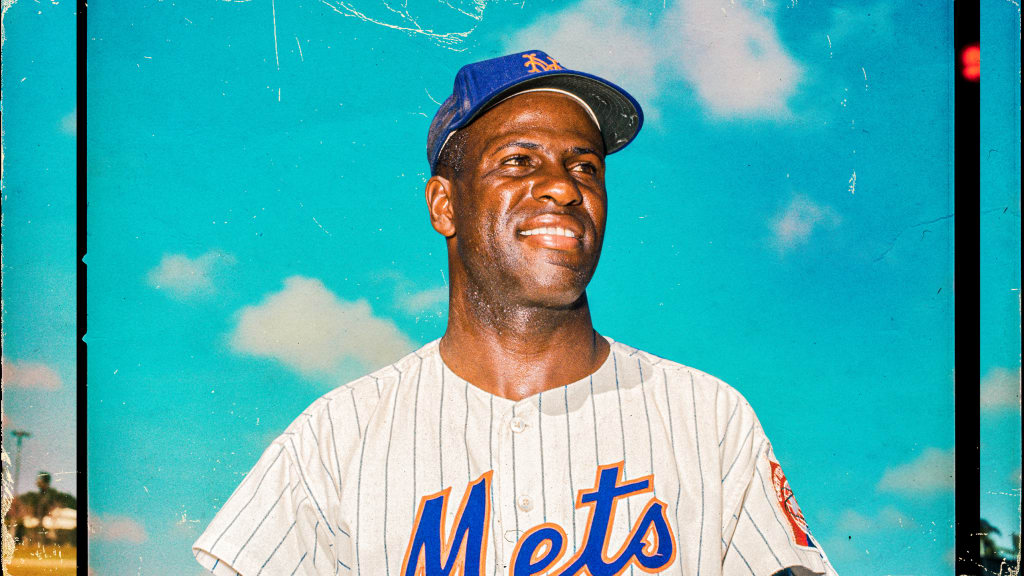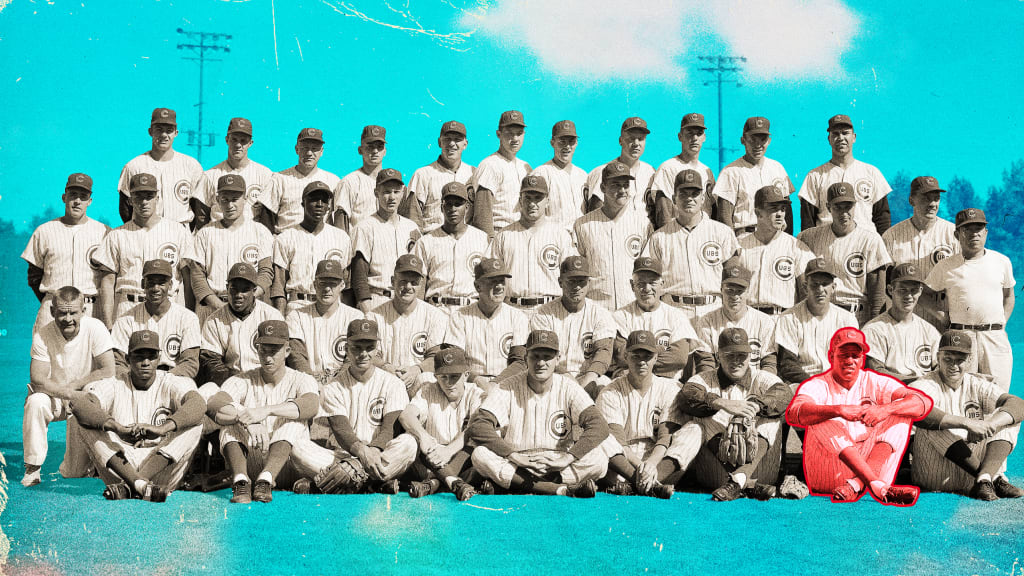
George Altman hasn’t quite seen it all. But he’s probably come closer than anybody in baseball history to seeing it all.
Altman played in the Negro Leagues. He played in the Major Leagues. He played in the Japanese Pacific League. Heck, in his later years, he even played in a nationally sanctioned horseshoe pitchers league (OK, that has nothing to do with baseball but it’s still pretty cool).
“I’ve been busy,” he says.
Though this cannot be proven, it can be reasonably proposed that Altman, who turns 90 today, played baseball in more organized leagues than anybody in history.
The back of Altman’s baseball card will show the 991 games he played for the Cubs, Cardinals and Mets from 1959-67. He hit .269 with 101 home runs and 403 RBIs and was selected as a National League All-Star three times (twice in 1961, when two games were held, and once in 1962).
That’s a very good career, worthy of remembrance.
But what makes Altman truly special is all that surrounded those nine seasons in the NL.
Altman is one of only 87 people to have played in both the Negro Leagues and the AL or NL. And he is one of only three people -- along with Don Newcombe and Larry Doby -- to have played in the Negro Leagues, AL/NL and Japan’s NPB.
Add in his collegiate experience at Tennessee A&I (the historically Black school that became Tennessee State), his time playing baseball in the Army and his time in the Panamanian and Cuban winter leagues, and Altman’s baseball career is uniquely diverse.
And what a career it was.
Altman joined the legendary Roberto Clemente and Hank Aaron in manning right field in one of those 1961 All-Star Games. He is one of only three players (along with Ernie Banks and Felipe Alou) to have homered off Sandy Koufax twice in the same game. He made a leaping catch in the ninth inning to preserve Don Cardwell’s 1960 no-hitter. And in Japan, he played through a bout with colon cancer and had a double-digit home run total at the ripe old age of 42.
So yes, George Altman has seen and done more than most baseball players. But he almost wasn’t a baseball player at all.
At Tennessee A&I, which did not have a baseball team until his junior year, the 6-foot-4 Altman played basketball for the legendary John McLendon, a Naismith Memorial Basketball Hall of Famer whose teams were credited with creating the up-tempo style of play we know today. McLendon went on to become the first Black basketball coach at a predominantly white university at Cleveland State and the first Black head coach in any professional sport with the ABL’s Cleveland Pipers.
“He was an early proponent of the fast break,” Altman says. “He loved to run. Just a great coach. I was kind of leaning toward basketball but ran into some knee problems. So I figured I might as well give baseball a shot. That’s the way it stuck.”
After graduation, Altman planned to become a basketball coach, with an offer to work at Memphis’ Lemoyne College. But an official at Tennessee A&I recommended him to the Kansas City Monarchs of the Negro American League.
“I joined the Monarchs in Indianapolis for a tryout,” Altman says. “As I worked out pregame, I had no idea I was going to be playing that night. So I went to sit on the bench, and [Monarchs manager] Buck O’Neil said, ‘Boy, you’re in there tonight.’ That kind of shook me a little bit. But I guess I had looked OK in practice.”
This was in 1955, eight years after Jackie Robinson broke the MLB color line and AL and NL clubs had signed many of the top Black players. As a result, the Negro League teams were not nearly as talented as they had once been, and Altman only spent three months with the Monarchs.
Still, that period playing for O’Neil, who will be inducted into the Hall of Fame this summer, was influential in his baseball life.
“I was in awe of the league, period,” Altman says. “It was like playing on the hallowed ground of those guys that I had heard of -- guys like Satchel Paige and Josh Gibson and Cool Papa Bell. And I was really impressed with Buck as a player-manager. One time, he hit a ball that almost broke the clock up in right field. I was thinking, ‘Man, this guy has got to be about 42 years old [O’Neil was actually 43 by that point]. If he can hit like that now, I wonder what the league was like in its heyday.’”
After that 1955 season, the Monarchs were sold, and O’Neil became a scout for the Cubs. Altman was one of the players he recommended to the organization, and Altman was signed prior to the 1956 season, which he spent with the Class B Burlington Bees.
“At that time, there was still a lot of Jim Crow going on,” he says. “I didn’t receive a whole lot of abuse, but I did receive some. It took some getting used to, because I had never played on a team with white players. Most weren’t all that friendly, but there were one or two that saved the day and helped us to relax.”
Altman’s career was interrupted when he was drafted into the Army, an experience that forced him to miss all of the 1957 and part of the 1958 season. But he kept playing baseball and basketball at his Fort Carson, Col., base. He hit a two-run, inside-the-park home run to help Fort Carson win the All-Army title against Fort Dix.
After playing a partial 1958 season with Class A Pueblo and getting at-bats with the Marlboro Smokers in winter ball in Panama, Altman opened the 1959 season with the Cubs. His first big-league hitting coach was none other than Hall of Famer Rogers Hornsby.

“With somebody like Sandy Koufax, throwing 95-100 mph, [Hornsby] taught me to wait on it,” Altman says. “I’m like, ‘Wait on what?’ Most of the time you want to jump out there early and make sure you don’t get jammed or something. But Rogers’ theory was that if you stay back, your hands will come out faster. He taught me to hit strikes, rather than guessing on a strike. So he was very helpful. But then, the thing is, after the game, he’s gone. And you can’t get extra hitting. You don’t dare ask for extra hitting.”
Generally, Altman felt he was on his own to navigate the rigors of the big leagues. He also played through various injuries that limited his own production.
In 1961 and ’62, though, Altman had a breakthrough. He slashed .311/.374/.535 with 49 homers and 55 doubles across those two seasons. In the first of the two All-Star Games in 1961, at San Francisco’s Candlestick Park, he hit a pinch-hit homer off Boston’s Mike Fornieles, who he had faced in the Cuban winter league in 1959-60, to help the NL beat the AL.
But Altman’s best day in the bigs came about a month later. On Aug. 4, at the Los Angeles Coliseum, he became the first player to take Koufax deep twice in a game. (An exclusive club that Banks and Alou would eventually join him in.)
“I got lucky,” Altman says. “Boy, he’s a super pitcher. The only guy I’ve seen where it looks like the low ball was coming up on you. That’s how fast he’s throwing it. But yeah, that was in the Coliseum. The one home run to left field wasn’t that great. It barely got over the fence. But anyway, you feel like you’ve done a job just to make contact with Koufax. And I got three hits off him one time when I was with the Cardinals [in 1963], too. So sometimes you get lucky.”
Altman ended up with the Cardinals because the Cubs dealt him to their rival despite his strong 1962 season. He was traded again a year later to the Mets, with whom he spent an injury-addled 1964 season in which his batting average cratered.
“In my day, Black players didn’t get a chance to ride out those injuries that much,” he says. “I know in my case, I definitely didn’t. I dislocated my shoulder the last day of Spring Training with the Mets. About 10 days later, [they] came to me and said, ‘You’re in there.’”
Altman never got going in New York, hitting .230 in 445 plate appearances, and was traded yet again -- this time, back to the Cubs -- prior to 1965 and became similarly frustrated playing for Leo Durocher and bouncing between the Majors and Minors in 1966 and ’67.
Rather than endure a Spring Training trial to try to win his roster spot back in ’68 after the Cubs had removed him, Altman decided to take his talents to Japan. Though he was already 35 years old when he ventured off to the Far East, he wound up playing eight seasons in all for Tokyo, Lotte and Hanshin. It was a productive period in which Altman swung the bat better than ever and didn’t have to worry about someone taking his spot in the lineup.
“I kept saying when I had a bad year, I would quit,” he says. “But actually, my best year ever was at 41.”
In that age-41 season, with Lotte, Altman hit .351 with 21 homers and 67 RBIs in 85 games. Sadly, he was diagnosed with colon cancer that August, cutting short his season to undergo chemotherapy.
“If I hadn’t caught cancer,” he says, “I’d probably be playing right now.”
After successful treatment of the cancer, he did return to play 114 games for Hanshin at age 42 in 1975. But with his body weakened by the chemo, his performance regressed as the season progressed.
That was the end of a long and varied career in pro ball.
When it was over, Altman returned to Chicago not via trade but to make trades. He spent 13 years on the floor of the Chicago Board of Trade dealing futures commodities. It proved to be a good, albeit hectic, outlet for his competitive instincts.
“I had been a stock broker a little bit before when I was in the Major Leagues,” he says. “I had gotten my license. But I didn’t like being a stock broker, because I didn’t like losing other people’s money. So I came to the Board of Trade.”
In his retirement years, Altman and his wife, Etta, moved to O’Fallon, Mo., very near the National Horseshoe Pitchers Association Hall of Fame and Museum. He became involved with various horseshoe leagues and tournaments and was part of a team that won the top prize at a nationally sanctioned event in 2012.
“We have a big building with 16 courts,” he says. “People come from all over to play horseshoes here.”
Altman is pretty well-traveled himself. Wherever there was baseball to be played, he played it. He was never a superstar, but he played in enough leagues to be truly in a league all his own.
